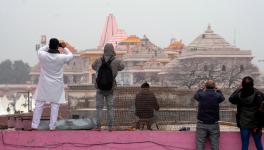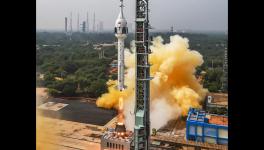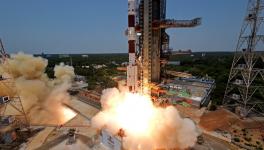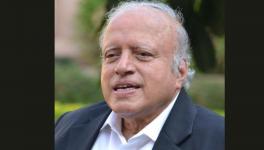Moonstruck India Must Revisit Nehru to Know who Backed Science or Superstition
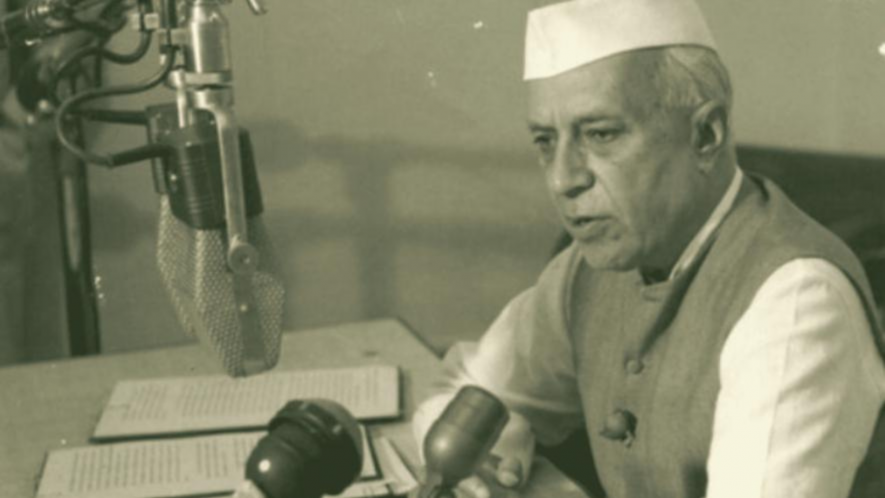
File Image
On 23 August, millions of Indians, and many beyond its borders, tuned to the Indian Space Research Organisation (ISRO)’s live telecast of the Chandrayaan-3 mission as the Vikram lander headed for the Moon. The nail-biting evening had a photo finish, as Vikram touched down for a soft landing. The United States, Russia (including erstwhile Soviet Union) and China have landed their crafts on the Moon before and India joins this select group. However, India alone has achieved a soft landing on the South Pole of the Moon where, despite numerous attempts, no country has reached before now.
The credit for ISRO’s extraordinary accomplishment, which cost an incredibly modest Rs. 615 crores, goes first to its talented scientists. It also goes to the vision and commitment of all those in preceding decades who saw space as a frontier India must cross. Many saw space travel not as a tool to serve nationalistic pride but an achievement for humanity.
For exactly these reasons, the name of first prime minister Jawaharlal Nehru has been cropping up ever since Chandrayaan-3 landed on the lunar surface. Nehru’s joy, one can easily presume, would have known no bounds had he witnessed the moments of 23 August evening when India opened a new frontier in humanity’s arduous yet continuing adventure towards the infinite dimensions of space.
Nehru in Sputnik Age
The Space Age began in the fifties, but those who witnessed its advent, and prepared India for success in the field, get no credit for today’s achievements. Prime Minister Narendra Modi’s ten-minute speech after ISRO’s Moon landing failed to acknowledge that India’s successes in space are not sudden gains but stand on the shoulders of giants. He spoke of the new flight of “New India”, a political slogan he has coined. However, if he has credited the Moon landing entirely to his government, presumably, he thinks the gains from such missions will also be similarly limited.
If we consider the dawn of the “Sputnik Age” in the 1950s, when India had barely gained independence, exploring space was virtually unthinkable. The first steps were taken by the erstwhile Soviet Union, which launched the artificial earth satellites Sputnik I and Sputnik II in October and November 1957. Sputnik 3 launched in May 1958 was an equally remarkable achievement. And, just about then, on 31 January 1958, the United States also launched an artificial satellite, Explorer 1.
Nehru, then the prime minister, did not ignore these trend-setting scientific developments because India was not a participant in the efforts or his government was not involved in such projects. Instead, in a note titled “The Basic Approach”, written in August 1958, he described the Soviet efforts as marking a “...great and overpowering progress in science and technology”.
Nehru did not forget the context in which these developments occurred either. Notwithstanding the steady overthrow of colonialism in many countries, he observed in the note that humanity remained gripped by a “certain mental exhaustion”. He wrote that as man went about conquering the physical world, he was failing to “conquer himself”. He was referring, among other things, to nuclear tests being conducted and weapons of mass destruction being stockpiled despite their known dangers to the present and future. And he cogitated on the struggle for development in poor nations as well.
The way Prime Minister Modi looked at the Chandrayaan-3 landing clearly indicates how India now lacks a sense of history and long-term perspective. India is on the Moon, and is celebrating the achievement, but it is also essential for the public to know why the success is crucial to science and development. Is it a flag India has planted outside planet Earth as a strategic goal, or can it symbolise more?
Certainly, Chandrayaan-3 marks a new epoch scripted by Indian space scientists for the world. However, what is missing is a statesman who goes beyond slogans to remind the country again that this success must “help us to get rid of some of our narrowness of race, caste or class”.
Unlike all predecessor prime ministers, who saw space as a frontier for humanity and tempered their joy of reaching towards the stars with reminders of narrow ideas flourishing in the terrestrial plane, Modi seemed to forget the pain, violence and bloodshed caused by spreading hate, bigotry and majoritarianism in the country.
Five months before writing “The Basic Approach”, on 26 March 1958, Nehru wrote to State chief ministers referring to the artificial satellites being launched into space by the Soviet Union and the United States. He knew the world was slowly “entering a new age, the age of interplanetary travel”. “Yet,” he wrote, “We are entangled in all kinds of rivalries and national conflicts which have no meaning in this new age.”
Inter-Stellar Vision Incompatible with Narrow Minds
Long before India had established the Indian National Committee for Space Research (INCOSPAR) in 1962, (it happened under Nehru as prime minister on the urging of Vikram Sarabhai) Nehru also delivered the inaugural speech of the Aero-Club in New Delhi. In this 4 December 1958 speech, he remarked that the world was heralding the space age even before the jet age. He wanted India to “get into tune with this scientific and technological age” to script its own inevitable advance.
On 2 October 1959, while inaugurating a library at Rajasthan University, Nehru said that someone from Earth had sent something that reached the Moon for the first time in history. He was referring to the Soviet Luna projects. Luna 3 was then circumnavigating the Moon and soon returned the first photographs from its far side. This was still years before he set up INCOSPAR, the precursor to ISRO, led by Sarabhai.
One of the most significant contributions of the Nehruvian era was the large number of well-versed science and technology personnel whom the country took pains to train and develop in brand new institutions. The least the votaries of “New India” could do is acknowledge that contribution.
Reject Superstition in Space Age
In Nehru’s words, the scientific revolutions and discoveries that led to the voyages towards the Moon were a mighty revolution that set the stage for continuous change in other arenas. If a spacecraft could reach the Moon, why could not nations and societies discard old beliefs about this constellation and other planets? He referred to how completely normal planetary formations grahans (or eclipses), for example, had some people stand on one leg or bathe in rivers to ward off supposed evil results—like the destruction of the Moon.
“It would be far better,” Nehru said wryly, “If they try to save themselves before they tended to save the moon”.
He saw reaching the Moon as an opportunity to rid India of superstitions that impede progress and limit scientific discovery and technological advances. Is this the view of those who run the country today? Not long ago, the Indian political class encouraged Indians to believe that plastic surgery created the Hindu god Ganesha, and that the COVID-19 pandemic could be fought off with chants and beating utensils. If this is no longer the view on the Right, then what has been this regime’s contribution to advancing the scientific temper? This is a query Indians must pose as they are urged to celebrate the Moon landing without wondering what benefits could accrue from it!
Hearteningly, others have taken the trouble to explain these, here and here, why moon missions are regarded as frontiers to “conquer” space. Even so, in India, the connections between the Space Policy and the success of Chandrayaan-3 still need to be examined by the scientific community and the public. Will it be guided by betterment of humanity, or are there other aims and objectives?
In this context, it is instructive to revisit Nehru’s message, sent on 16 September 1959 to Nikita Krushchev, congratulating him after a Soviet Union rocket reached the Moon. He described it as a “magnificent achievement for humanity and in particular for Soviet scientists”. “May it be,” he wrote, “the prelude to even greater achievements in the establishment of peace and goodwill on earth.”
Generations of ISRO scientists have dedicated their lives to taking India to greater heights, but the current regime does not seem persuaded by any long-term vision. Or, its leaders would have stopped to notice—and condemn—the contradiction between reaching the Moon and the ongoing violence in the name of ethnicity, faith and identity in many parts of the country.
The author was Officer on Special Duty to President of India KR Narayanan. The views are personal.
Get the latest reports & analysis with people's perspective on Protests, movements & deep analytical videos, discussions of the current affairs in your Telegram app. Subscribe to NewsClick's Telegram channel & get Real-Time updates on stories, as they get published on our website.













